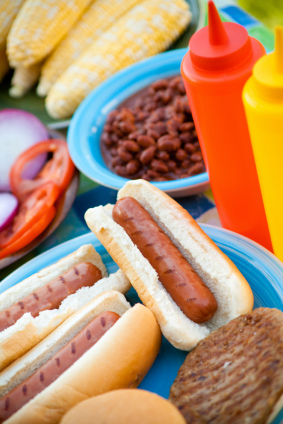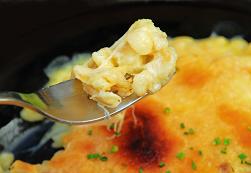 It’s the season of barbeque and picnics, and at The Center for Natural Breast Reconstruction, we know most of our favorite summertime eats are brimming with saturated fat and cholesterol. As a solution, we’ve compiled our favorite recipes for healthy, waistline-friendly alternatives to the usual warm-weather menu items. Serve them proudly at your next cookout—they’re nutritious and delicious!
It’s the season of barbeque and picnics, and at The Center for Natural Breast Reconstruction, we know most of our favorite summertime eats are brimming with saturated fat and cholesterol. As a solution, we’ve compiled our favorite recipes for healthy, waistline-friendly alternatives to the usual warm-weather menu items. Serve them proudly at your next cookout—they’re nutritious and delicious!
Trim Potato Salad:
3 med. potatoes
1/3 c. vegetable stock
1/4 c. low fat plain yogurt
3 tbsp. green pepper, minced
1 hardboiled egg (minus the yolk), chopped
1/3 c. onion, minced
1/4 tsp. celery seed
1/4 tsp. parsley flakes
Salt and pepper to taste
Cook potatoes in skins and cut into bite size pieces (potato skins have all the nutrients!). Allow chopped potatoes to cool until just warm. Add the remaining ingredients and toss lightly until well mixed. Chill and serve.
- No-Pounder Beet Burgers: 1 1/4 cups cooked, cooled brown rice
1 cup cooked brown or green lentils, cooled, drained well
1 cup shredded beets
1/2 teaspoon salt
Fresh black pepper to taste
1 teaspoon thyme
1 teaspoon dill
3 tablespoons very finely chopped onion
2 cloves garlic, minced
2 tablespoons smooth peanut butter
1/2 cup very fine breadcrumbs
Olive oil for the pan
Peel beets and shred with the shredder attachment of your food processor, and then change the attachment to a metal blade. Pulse the brown rice, shredded beets and lentils about 15 to 20 times, until the mixture comes together, but still has texture. It should look a lot like ground meat. Now transfer to a mixing bowl and add all the remaining ingredients. Use your hands to mix very well. Place the mixture in the fridge to chill for half an hour.
Preheat a cast iron pan over medium-high. Form the patties by taking a heaping 1/2-cup of mixture, and shaping it into burgers with your hands.
Pour a very thin layer of oil into the pan and cook patties for about 12 minutes, flipping occasionally. Burgers should be charred at the edges and heated through. Serve on a whole-wheat bun with all your favorite trappings.
- Skinny Pasta Salad 1/2 lb. rotini (springs)
2 lg. carrots, diced
3 ribs celery, diced
1 lg. red pepper, diced
1 med. white onion, diced
20 sliced black olives
1 lg. cucumber, diced
1 lg. tomato, diced
Dill weed, black pepper, Mrs. Dash, basil
1/2 bottle low fat Italian dressing (or more if needed)
Cook the pasta as per instructions on box, then chill. Chop all the vegetables and mix together.
Add dill, black pepper, and basil to taste (fresh is best). Add the chilled pasta, Italian dressing, and toss together. Chill and serve cold.
- Low Fat Hot Dogs:The trim tip for this summer favorite is easy—simply make the switch from meat to meatless. Smart Dogs by Lightlife are fantastic hot dog substitutes without the mystery meat or saturated fat. In fact, each link has 0 grams of fat, 45 calories, and 8 grams of protein. All that nutrition and they still taste great! Grill these puppies, and top them off with a whole-wheat bun, diced onions, relish, ketchup, and you’ve got a new summer classic!
What is your favorite summer-time food?







